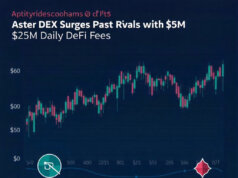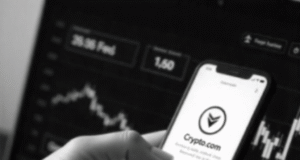The DeFi world is buzzing! Aave, a heavyweight in decentralized lending, is making a power play by deploying its Aave v3 platform on OKX’s X Layer. This isn’t just another protocol integration; it’s a potential game-changer, blurring the lines between centralized and decentralized finance (CeFi and DeFi) in a way we haven’t seen before. Think of it as a high-stakes chess match, with Aave strategically positioning itself for maximum impact.
Aave on OKX X Layer: DeFi’s Next Big Move
This move is a big deal for several reasons. First, it brings Aave’s robust lending capabilities to a new audience – OKX’s massive user base. Second, it injects serious liquidity into X Layer, potentially catapulting it into the top tier of Layer-2 solutions. Third, it’s a fascinating experiment in CeFi-DeFi collaboration, a trend we’re likely to see more of in the future. Let’s dive deeper.
Why This Matters: A Deeper Dive into the Aave-OKX Partnership
Aave’s decision isn’t impulsive. It’s a calculated move to tap into OKX’s established user base and leverage X Layer’s speed and low transaction fees. For OKX, landing Aave is a coup. It instantly boosts X Layer’s credibility and attracts serious DeFi activity. This symbiotic relationship benefits both players significantly. But what about the rest of the market?
Think of it like this: Aave is bringing its Ferrari (its sophisticated lending platform) to a bustling racetrack (OKX X Layer). Other Layer-2 solutions, while perhaps having their own strong points, might suddenly find themselves facing stiffer competition. The race for Layer-2 dominance just got a whole lot more exciting.
The integration will offer users seamless access to Aave’s lending and borrowing services for assets like USDT and ETH, expanding to xBTC soon. This is huge for accessibility; bridging the gap between traditional finance users on OKX and the world of decentralized finance.
Winners and Losers: Who Benefits (and Who Doesn’t)?
Winners: Aave (increased user base, TVL growth); OKX and X Layer (increased liquidity, credibility, and user activity); users (easier access to DeFi, lower fees).
Potential Losers: Other Layer-2 solutions that might see some user and liquidity migration; DeFi protocols that are slow to adapt to the multi-chain future.
This is not a zero-sum game, however. The growth of DeFi benefits the entire ecosystem. The increased competition could drive innovation and efficiency across the board. It’s a dynamic market, and the players need to adapt to survive.
The Bigger Picture: CeFi and DeFi Convergence
This partnership represents a significant step in the convergence of CeFi and DeFi. Centralized exchanges are increasingly realizing the power of integrating DeFi solutions to offer a more comprehensive and attractive platform for their users. This isn’t just about adding a DeFi feature; it’s about building a robust, integrated ecosystem that seamlessly blends the best of both worlds.
The long-term implications are substantial. We might see more exchanges follow OKX’s lead, building their own Layer-2 solutions and integrating popular DeFi protocols. This could lead to a more competitive and innovative DeFi landscape, ultimately benefiting users with increased choice and better services. It’s a fascinating evolution, and we’re only just beginning to see its full potential.
This collaboration also highlights the ongoing efforts to bridge traditional finance with decentralized rails, particularly as Aave continues to explore initiatives like “Horizon” for institutional real-world asset (RWA) adoption. The implications for regulatory bodies are also significant, as the lines between regulated centralized entities and decentralized protocols become increasingly blurred.
Disclaimer: This content is for informational purposes only and does not constitute financial advice.





